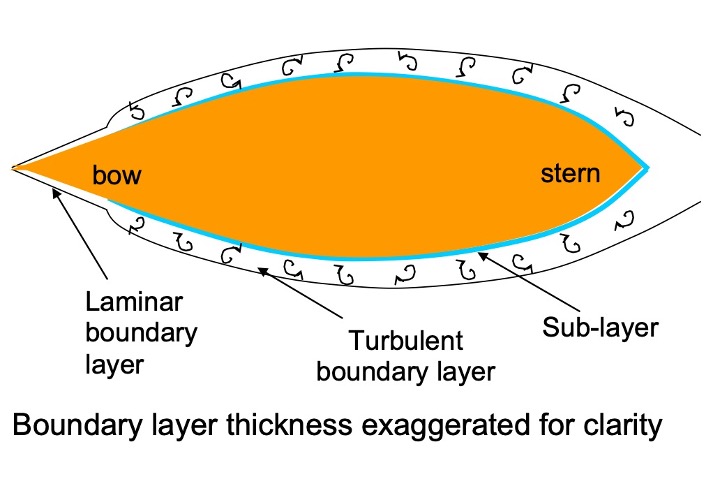This section covers a range of topics that don’t quite merit their own page, including hull surface roughness, model yacht performance, stablity and capsize, and the design process.
Hull roughness basics
The roughness of the underwater surface of the hull due to marine fouling or just a bad paint job affects the friction resistance of the yacht, which in turn affects its performance. The notes below explain how even tiny surface lumps and bumps can affect performance, and provde guidance on what you can do about it.

Hull roughness for model yachts

Whereas the previous article gives the classic description of hull roughness effects for yachts and ships, things are very different for radio controlled sailing yachts. This is because they operate at a lower Reynolds number than full size vessels i.e. they are shorter length and sail at lower speed. The paper below delves into this problem in an attempt to answer this simple question: how smooth should the hull of a model yacht be for best performance? The answer is complicated and incomplete.
Effect of some parameters on model yacht performance
The rules governing the design of racing yachts are often determined by perceptions rather than being evidence-based. This is especially true in model yacht rules. For example, the weight of the batteries installed in model yachts may subject to strict limits, whereas the weight of the keel bulb is not. The science shows that the effect of battery weight variations on performance is negligible, but small variations in keel bulb weight make a big difference. The rule makers have reacted to perceptions, not reality. This paper shows effect of varying different parameters on the performance of the DF95 class model yacht.
Stability and capsize
These notes are from a presentation made to the Old Gaffers Associatoin of Western Australia in May 2024. They are directed towards owners of older style yachts and trailable boats with older style rigs, but the content is applicable to all yachts.
AMECRC systematic yacht series

The Australian Maritime Engineering cooperative Research Centre (AME CRC) was a national maritime research body comprising 26 orgnaisations from industry, government and academia. It operated from 1992 to 1999. I was the leader of the Yacht Research program (as well as being the leader of the Education program and the Regional Manager for Western Australia). The yacht research program established what was then the second largest standard series for yacht hulls (the Delft series was the largest), with 14 hull forms tank tested and analysed.
Decision support method of design
Chines on cruising yachts
Matching hull and rig efficiency
This brief note is the justification I provided of a statement I made in a sailing forum, that it was pointless putting a high efficiency rig on a low efficiency hull.